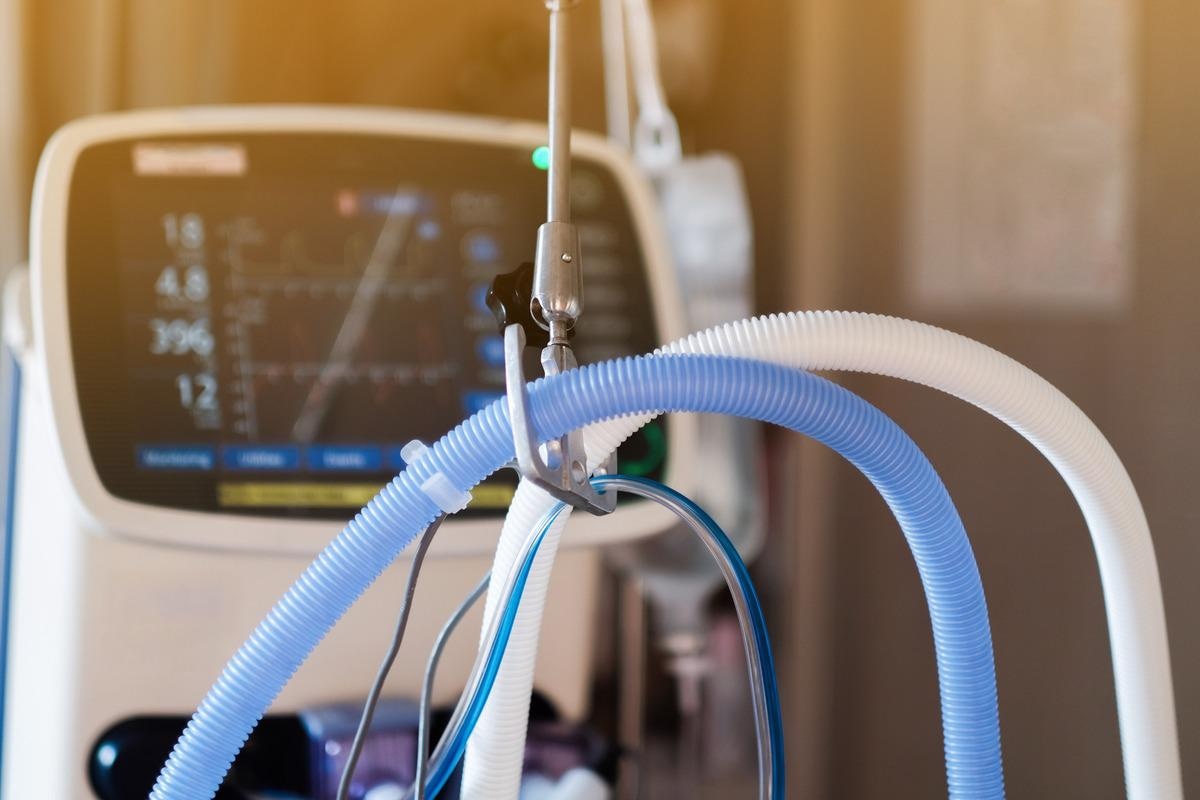In a recent study posted to the journal Biomolecules, researchers evaluated biomarkers that could help identify coronavirus disease 2019 (COVID-19) patients needing invasive mechanical ventilation (IMV).
 Study: Circulating Levels of PD-L1, TIM-3 and MMP-7 Are Promising Biomarkers to Differentiate COVID-19 Patients That Require Invasive Mechanical Ventilation. Image Credit: Horth Rasur/Shutterstock
Study: Circulating Levels of PD-L1, TIM-3 and MMP-7 Are Promising Biomarkers to Differentiate COVID-19 Patients That Require Invasive Mechanical Ventilation. Image Credit: Horth Rasur/Shutterstock
Background
COVID-19, caused by severe acute respiratory syndrome coronavirus 2 (SARS-CoV-2), was declared as a pandemic by the World Health Organization (WHO) in March 2020. There have been 460 million confirmed SARS-CoV-2 cases and more than six million COVID-19-related deaths so far globally.
Several SARS-CoV-2 patients with severe disease need IMV. However, many other COVID-19 patients require only supplemental oxygen via nasal cannula, i.e., non-invasive mechanical ventilation (NIMV).
Previous reports have indicated that COVID-19 patients have elevated serum levels of programmed cell death protein ligand-1 (PD-L1) and matrix metalloproteinase 7 (MMP-7). Nevertheless, there are little data regarding soluble PD-L2 (sPD-L2), soluble T-cell immunoglobulin and mucin domain containing-3 (sTIM-3), and soluble Galectin-9 (sGal-9) levels in SARS-CoV-2 patients. Further, potential biomarkers that might assist in identifying whether a SARS-CoV-2 patient needs invasive ventilatory support are yet to be discovered.
About the study
In the present cross-sectional study, the researchers assessed whether MMP-7 serum levels and molecules associated with exhausted T cells could be used as biomarkers to distinguish between NIMV and IMV COVID-19 patients. The COVID-19 patients included in the research were hospitalized at the Instituto Nacional de Enfermedades Respiratorias (INER), Mexico City, during March and August 2020.
According to the need for IMV, 105 reverse transcription-polymerase chain reaction (RT-PCR)-confirmed SARS-CoV-2 patients were split into two groups: 1) NIMV patients and 2) IMV patients. In addition, 23 age-matched healthy individuals served as controls. The controls' blood samples were procured before the SARS-CoV-2 pandemic.
At the time of hospital admission, the patients' health records were evaluated to assess comorbid conditions, demographic information, respiratory parameters, and smoking status. Obesity was defined as a body mass index (BMI) more than 30, and arterial oxygen partial pressure (PaO2)/fractional inspired oxygen (FiO2) was determined using arterial blood. All sera collected from patients were maintained at −20◦C until it was used. Enzyme-linked immunosorbent assay (ELISA) was used to measure serum levels of sMMP-7, sGal-9, sTIM-3, sPD-L2, and sPD-L1, which were then compared to clinical data. Twelve patients were evaluated again after eight months to analyze the variation of the biomarker levels between acute illness and post-SARS-CoV-2.
Results and discussions
The study results demonstrate that the PaO2/FiO2 values were lower in the IMV COVID-19 patients. The IMV patients had a lengthy hospital stay and high levels of sMMP-7, sPD-L1, and sTIM-3 relative to NIMV patients.
The sTIM-3 levels were linked to the severity of SARS-CoV-2 and were negatively associated with PaO2/FiO2 and positively associated with procalcitonin, D-Dimer, and troponin levels. These inferences suggest that IMV SARS-CoV-2 patients might have elevated procalcitonin and sTIM-3 levels due to an uncontrolled inflammatory process. The sGAL-9 was positively linked to sMMP-7 and sTIM-3, indicating that it regulates inflammation during SARS-CoV-2 infection.
Although the sTIM-3 and sPD-L1 levels were heightened in NIMV and IMV SARS-CoV-2 patients, IMV patients exhibited much higher levels of these markers. These observations indicate that the COVID-19 patients have dysfunctional immunological checkpoints, which contributes to an unregulated inflammatory process linked to illness severity and IMV.
It was observed that the apt biomarker for predicting IMV in SARS-CoV-2 patients was sMMP-7. This was because the sMMP-7 levels were only elevated in IMV COVID-19 patients and not in NIMV patients and healthy controls. The sMMP-7 levels also correlated with the severity of the illness and inflammatory lung injury during acute respiratory distress syndrome (ARDS). Further, MMP-7 levels were elevated in patients with lung fibrosis, especially idiopathic pulmonary fibrosis.
Unexpectedly, sPD-L2 demonstrated a protective effect in IMV SARS-CoV-2 patients. It was inversely correlated with troponin, platelets, and days of IMV in COVID-19 patients. By contrast, sPD-L2 correlated positively with PaO2/FiO2.
Following eight months of SARS-CoV-2 infection, IMV patients had a significant decrease in the initially elevated sGal-9, sPD-L1, and sTIM-3 levels, implying recovery of the immune response. These patients' sPD-L2 levels were increased, which also suggested enhanced immunity, while their sMMP-7 levels remained unchanged after eight months.
Conclusions
The study findings show that the sPD-L1, sTIM-3, and sMMP-7 levels were considerably higher in individuals with severe SARS-CoV-2, suggesting that these biomarkers might assist in identifying patients who require IMV. The present study highlights the need for more investigations to determine if the co-existence of hyper-inflammation caused by increased sTIM-3 and sPD-L1 levels is due to anergy, immunosenescence, immunoparalysis, or exhaustion.
Overall, the study shows that sMMP-7, sTIM-3, and sPD-L1 are possible biomarkers of COVID-19 severity that could be used to differentiate people who need IMV. Further, it suggested that MMP-7 might be a marker for the continuity of lung lesions after COVID-19.
Journal reference:
- Chavez-Galan L, Ruiz A, Martinez-Espinosa K, Aguilar-Duran H, Torres M, Falfan-Valencia R, Pérez-Rubio G, Selman M, Buendia-Roldan I. (2022). Circulating Levels of PD-L1, TIM-3 and MMP-7 Are Promising Biomarkers to Differentiate COVID-19 Patients That Require Invasive Mechanical Ventilation. Biomolecules. doi: https://doi.org/10.3390/biom12030445 https://www.mdpi.com/2218-273X/12/3/445